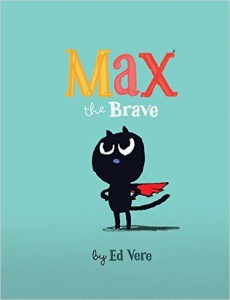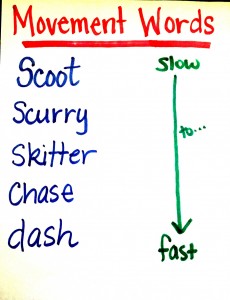 Why I Picked It Up:
Why I Picked It Up:
I definitely judged this book by it’s cover. Those who know me know I am not a lover of cats, but this one made me smile. His eyes, stance, and cape had me amused. Plus, Sherry and I seem to have an unexplainable thing for superheroes.
Why I Finished It:
It’s just cute. In fact, I read it after my son. My youngest, who is eight, looked at the book that was laying on the stool as I made lunch. He read through and laughed at the end. With energy he explained to me how the cat wants to be brave and chase mice, but he doesn’t know what a mouse looks like. Problem? Nah, he’ll ask various animals if they are a mouse. Each animal, the elephant, fish, and more, say no and send him on his way. When he finally asks mouse if he is a mouse, mouse points him in the direction of a monster. He giggled and said it was funny.
Who I Would Give It To:
This would be a great addition to a primary classroom library. I can see this being a fun read aloud for young kids.
Integration Ideas:
Retelling
This story is repetitive and therefore lends itself to being retold by small kids. Create and place “mats” on the ground that say characters, setting, first, second, next, then, last. Have students step on the “mats” and say out loud the answers to the title on the mats. So, as they step on characters, the students will say who the characters in the story are and then step to the next mat, setting, and say when and where the story takes place. Depending on the students in your class, you might want to provide sentence stems on the mats to help the students retell the story.
Writing – Word Choice
I love that even though this is a simple text, the author uses so many different words for movement. Instead of  simply saying “he went”, “walking”, etc. he uses words like scoot, skitter, dash, and so many more. Use this book as a mentor text for students. As you read the story again, stop when the author describes the cats movement. Write the word on the board and then as a class act out the word. Acting out the differences between scoot, skitter, dash, etc., will help the students understand the differences between the words. After the class has found, discussed, and acted out the words have students take out their own writing. Ask the students what words they have used for movement. Then ask them if they would like to change their words to make their writing more specific.
simply saying “he went”, “walking”, etc. he uses words like scoot, skitter, dash, and so many more. Use this book as a mentor text for students. As you read the story again, stop when the author describes the cats movement. Write the word on the board and then as a class act out the word. Acting out the differences between scoot, skitter, dash, etc., will help the students understand the differences between the words. After the class has found, discussed, and acted out the words have students take out their own writing. Ask the students what words they have used for movement. Then ask them if they would like to change their words to make their writing more specific.
Websites to Visit






This book looks so cute! I love the vocabulary and word choices that can be learned just from this one book. One of the integration ideas (retelling) was a fabulous idea for my classroom and my students. Thank you so much!
Wow. I really loved the ideas for retelling. Using the mats as a tool is a great. I would definitely have to use the sentence stems to help my young readers to start with, but eventually fade the prompts away. I also liked the word choice activity which will help to enrich the vocabulary of young readers and writers. Thank you for the excellent resource.
Absolutely love this book. I am a kinder teacher and can imagine the variety of ways I can incorporate this book into our writing workshop. For example, we can use this to look at and discuss text text to text connection, word choice, and conventions, etc. Not only will my students be excited to hear what happens next or what animal the cat will come across next, they could write what will come next or what will happen. Thank you Mrs. Rogers for sharing your knowledge, experience, and ideas!!